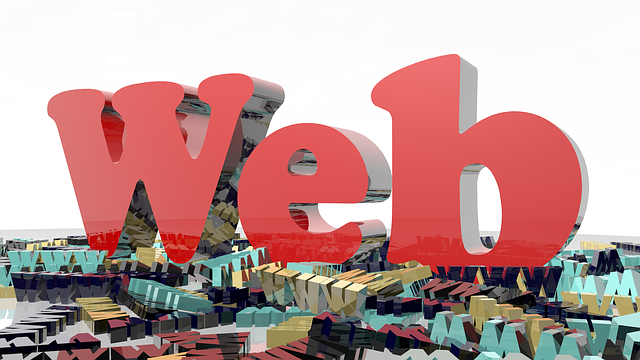In competitive Houston web design, understanding user flow is key to success. By mapping visitor journeys, designers optimize processes for enhanced usability, guiding page structure and layout for intuitive navigation and clear calls-to-action. This fosters meaningful interactions, drives conversions, and elevates web design from aesthetics to a powerful business tool. Intuitive navigation structures, built on simplicity, consistency, and visual clarity, ensure exceptional user experiences across devices. Strategic navigation optimizes content access, encourages exploration, and leads to higher engagement and conversions, making Houston web design a vital success factor in the thriving digital landscape.
In today’s digital landscape, intuitive navigation structures are paramount for any Houston web design. A well-crafted user flow enhances user experience, drives engagement, and ultimately boosts conversions. This article delves into the essence of understanding user flow, highlights key elements of intuitive navigation, explores strategies to create seamless user journeys, and presents compelling case studies from successful Houston web designs. By the end, you’ll grasp how effective navigation can transform any online presence.
- Understanding User Flow and Its Impact on Web Design
- Key Elements of Intuitive Navigation Structures
- Strategies for Creating Seamless User Journeys
- Case Studies: Successful Houston Web Designs with Effective Navigation
Understanding User Flow and Its Impact on Web Design

In the realm of Houston web design, understanding user flow is paramount for creating effective and engaging digital experiences. User flow refers to the path a visitor takes while navigating a website, from initial entry to their desired outcome, whether it’s making a purchase, finding information, or signing up for a service. By mapping out these journeys, designers and developers can identify pain points, streamline processes, and enhance overall usability.
This knowledge directly impacts web design by guiding the structure and layout of pages. An intuitive navigation system, tailored to user flows, ensures visitors can effortlessly find what they need. For instance, a well-designed menu, clear call-to-actions (CTAs), and thoughtfully placed content all contribute to a positive user experience, encouraging longer sessions and higher conversion rates. Thus, prioritizing user flow is not just about aesthetics in Houston web design; it’s about fostering meaningful interactions and driving desired outcomes for both the business and its users.
Key Elements of Intuitive Navigation Structures

Intuitive navigation structures in Houston web design serve as the backbone of a seamless user experience. Key elements include simplicity and consistency, where users can effortlessly predict where to find information or perform actions. A clean layout with clear labels and logical grouping of content ensures visitors understand their options at a glance.
These structures also incorporate feedback mechanisms, like hover effects or active states, to guide users without overwhelming them. Responsive design is another vital aspect, ensuring the navigation adapts gracefully across various devices and screen sizes. By prioritizing ease of use and visual clarity, Houston web designers can create intuitive navigation that enhances user engagement and drives positive outcomes for any online platform.
Strategies for Creating Seamless User Journeys

In the realm of Houston web design, creating intuitive navigation structures is a game-changer for user experiences. Strategies to ensure seamless user journeys involve understanding the target audience’s needs and behaviors. By mapping out user flows, designers can identify pain points and optimize pathways, making it easy for visitors to find what they’re looking for without frustration or confusion.
One effective approach is to implement clear labeling and hierarchical structures. Simple, descriptive labels guide users while a logical site structure ensures information is organized rationally. Additionally, incorporating breadcrumbs helps users understand their current location within the site and provides an easy way back to higher-level pages. This, combined with efficient call-to-action (CTA) placement, fosters a smooth user experience, encouraging exploration and conversions in the process.
Case Studies: Successful Houston Web Designs with Effective Navigation

Houston, a vibrant metropolis, has witnessed a surge in digital transformation with numerous businesses adopting sleek and efficient Houston web design strategies. One of the key elements contributing to this success is the artful integration of intuitive navigation structures. By prioritizing user flow, local companies have enhanced their online presence, making it easier for customers to find what they’re looking for.
Case studies reveal that effective navigation plays a pivotal role in retaining users and converting them into clients. For instance, a leading Houston-based e-commerce startup saw a 25% increase in sales after implementing a simple yet sophisticated navigation system. Similarly, a local news website experienced higher user engagement and reduced bounce rates by organizing content with clear categories and intuitive labels. These success stories emphasize the importance of designing navigation that reflects the needs and preferences of Houston’s tech-savvy users, ultimately fostering a positive online experience.
Houston web design thrives on intuitive navigation, ensuring users have a seamless and enjoyable experience. By understanding user flow and incorporating key elements like clear menus, consistent branding, and easy-to-use search functions, designers can create effective navigation structures. The strategies outlined in this article, combined with real-world case studies, provide valuable insights into optimizing user journeys. Implementing these principles will not only enhance the usability of Houston web designs but also drive better engagement and conversion rates.
